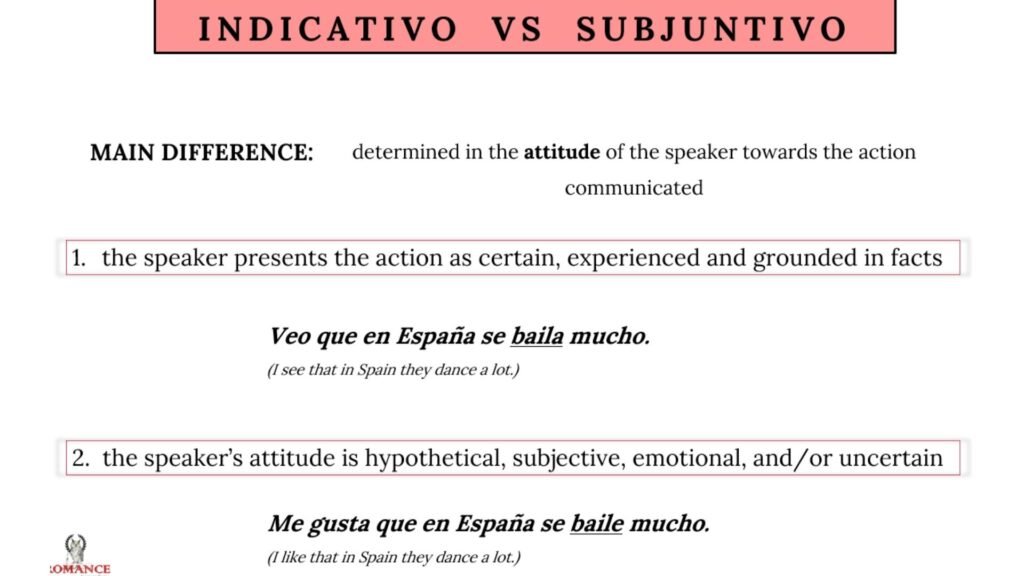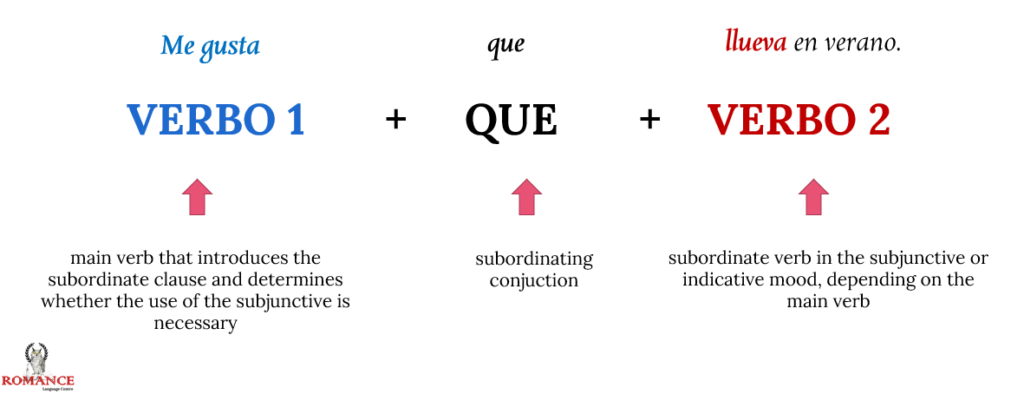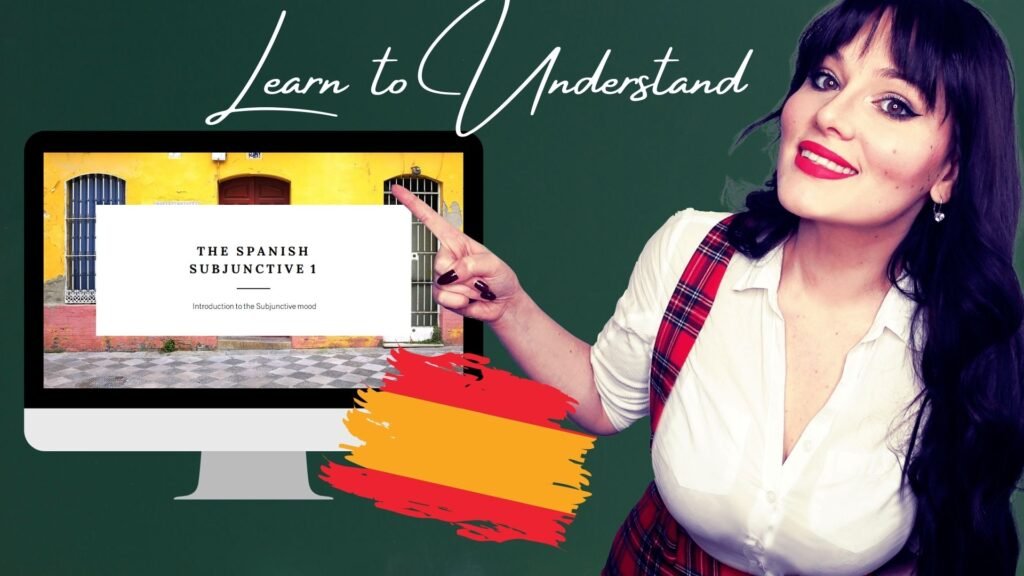Has Spanish Subjunctive been giving you a hard time? Do you still struggle to understand the very concept of it? Do you have many unanswered questions, and you don’t know where to begin?
You are not alone! Every single student of mine has struggled with Spanish Subjunctive, and today I am bringing you answers to most commonly asked questions. These are some of the basic things you need to know as a Spanish learner to understand Spanish Subjunctive.
The fact is, most people find Spanish Subjunctive very hard and abstract. My students have called it “very capricious” and “unstable”. Well, that is the nature of the Spanish Subjunctive.
Subjunctive is like a teenager – moody, misunderstood and insecure.
This is perhaps one of the most difficult topics of Spanish language, especially challenging for speakers of languages that don’t explicitly use the Subjunctive mood, and that includes native English speakers.
Don’t worry though, we are here to make the dreaded Spanish Subjunctive make more sense and become more natural to you to use over time and with practice.
With the information we will give you, you will begin to understand in depth the nature of the Subjunctive mood. You will learn what is Subjunctive, and how it is used within a wider grammatical context.
Finally, we will give you an overview of things that require the use of the Subjunctive, like verbs of emotion, verbs of influence, impersonal expression of evaluation, expressing doubt, etc.
However, before you can begin to use anything, you have to understand what it is in the first place.
WHAT IS THE MEANING OF SUBJUNCTIVE?

Before we begin to understand the subjunctive mood, I want to make sure that you understand what is mood. And for that, we should talk briefly about verbs.
The basic knowledge of verbs is that they are words used to describe an action, state or occurrence. However, more importantly, in Spanish, verbs have 3 main properties, or grammatical categories: aspect, tense and mood. You can also think of it as different properties of the verb.
The mood property of the verb allows speakers to express their attitude towards the action that they are expressing or communicating.
There are 3 main moods in Spanish language:
a) el indicativo: presents the action as a statement of fact
b) el imperativo: serves to express commands
c) el subjuntivo: presents the action as a hypothesis, or as a statement of desire, etc.
DOES SUBJUNCTIVE EXIST IN ENGLISH?
Most of my students, when asked, believe that subjunctive doesn’t exist in English, or that it exists only in Romance Languages, which is not the case.
The truth is, the subjunctive is expressed obviously by distinct paradigms, aka forms, in Romance Languages, compared to some other European languages, but it exists in its functions in other languages, too.
The same is believed for cases, when even teachers say that English or Spanish don’t have cases, unlike Slavic languages for example. They very much do! They exist and still retain all the functions, the only difference is that other languages express these functions in other ways – for example, and in the case of Spanish, with prepositions – not through inflection.
So where can we find the English subjunctive?
It is found in set phrases that express a wish like:
God bless you!
God save the Queen!
It is also used in subordinate clauses that follow verbs expressing a demand or a recommendation:
I demand that she tell the truth!
Subjunctive is often linked to the main clause with that, however this is more common in American English, and in British English they usually express the same message in other ways:
It is vital to stop them at once.
It is vital that they are stopped.
Additionally, it is found in the past when expressing regret or doubt, and then the past form was is replaced by were:
If your father were alive.
WHAT IS THE DIFFERENCE BETWEEN THE INDICATIVE AND THE SUBJUNCTIVE?

Let’s talk about the difference between indicative mood and subjunctive mood, because by contrasting these two is how we will best understand their individual properties.
We’ve mentioned already that el indicativo presents the action as a statement of fact and that el subjuntivo presents the action as a hypothesis or as a statement of desire, among other things.
To simplify the characters of these two moods, let’s use personification in hopes that it will help you understand Spanish Subjunctive.
I want you to imagine two people, two characters.
First, I present to you…

Imagine Don Indicativo – a serious, well-experienced, and well-traveled businessman who likes to deal with facts. Just like his name suggests, he’s a person who indicates, informs, thinks, explains, clarifies, and affirms. He has a firm, secure personality, and an objective vision of things. He doesn’t like sentimentality; he says it how it is. He loves talking about his experiences, places he’s been to, people he’s met, and cold hard facts.
Spanish Indicative mood is the mood you will learn first. The tenses we learn at the beginner, elementary, and beginner intermediate level – el presente, preterito perfecto, preterito imperfecto, etc. – are all in the Indicative mood.
Let’s observe these two sentences. What does the use of the indicative communicate?
El perro es un mamífero.
We are using el presente de indicativo of the verb SER because we are expressing a cold hard fact that the dog is a mammal.
Another example is:
Ana viene esta noche.
By using the Indicative, we are communicating that, as far as the speaker is concerned, Ana is coming for sure, because something in the speaker’s knowledge allows them to say it with certainty. It might be that Ana had told them, Ana had texted them, they had arranged it…
On the other hand, there is Don Subjuntivo.

Don Subjuntivo is an insecure artistic soul with a very unstable character. He’s very much controlled by his passions and emotions, that depend on so many things. His moods always change, he’s quick to judge, to react, to express his emotions, to wish and dream and hypothesize. He’s not bothered by facts and is a bit of a conspiracy theorist. He loves talking about what he hasn’t seen. He’s always dreaming in the future, and talking about things that could be and could have been.
It is important to note that we use the subjunctive to express our perception or attitude towards something. Just like in the Indicative, there are tenses in the Subjunctive – el presente de subjuntivo, el imperfecto de subjuntivo, etc.
Let’s observe the next two sentences. What does the subjunctive add to the meaning?
Dudo que pueda estar ahí a esta hora.
Espero que Ana venga esta noche.
Because of the nature of the verbs espero que and dudo que, we are adding doubt or a feeling, an emotion which triggers the use of the Subjunctive in the subordinate clause.
The fact is, we don’t know whether Ana will come over or not. We are merely saying that we would like her to.
We can clearly see on these examples that, generally speaking, the difference between these two moods is determined in the attitude of the speaker towards the action communicated.
When using the Indicative mood, the speaker presents the action as certain, experienced and grounded in facts, whereas with the Subjunctive, the action is hypothetical, foreign, uncertain and observed and assessed through a subjective POV, often with emotion.
Let’s look at another example here:

“Veo que en España se baila mucho.”
By using a verb of physical perception VER (to see), the speaker indicated that in Spain they dance a lot because they’ve seen it with their own eyes. It is in that moment factual (remember that Don Indicativo likes to talk about his experience).
Me gusta que en España se baile mucho.
In this sentence, the speaker didn’t experience anything. Therefore, here’s no indication of how certain it is, nor does it matter because it’s simply someone’s emotional response. There is nothing in the main clause (I like) that tells us that the action in subordinate clause (to dance) is factual, only how the person feels about this, thus it is expressed in the Subjunctive.
HOW DO I USE THE SUBJUNCTIVE?
This is an extensive topic, but the first thing you should know is that the Subjunctive usually cannot stand alone and just because. Something must introduce it or triggered it.
Subjunctive mood is ever present in Noun Clauses, where its use is triggered or caused by the main clause (verb), meaning that the Subjunctive will then appear in the subordinate clause.
SUBJUNCTIVE IS ALWAYS INTRODUCED BY QUE?
You will often hear that the Subjunctive is always introduced by the conjunction QUE – that is not true, and it is a very basic and over simplified claim given by teachers who don’t prioritize teaching languages to their students with understanding.
Let me repeat that – Spanish Subjunctive does NOT have to always be introduced by the conjunction QUE, and if you are inclined to remember it like that, you would be doing yourself a huge disservice in the long run.
You need to understand what is subjunctive and what it communicates so you could use it independently, with natural ease and security, and without programming too many unnecessary rigid rules into your mind. These rules work for the time being, but will be hard to break later on.
That being said, let’s look at what are nominal clauses so you can start noticing common constructions that require the use of the subjunctive.
The best way to do this is to look at the construction of the nominal clauses that can be summarized in this simple formula:
VERB 1 + QUE + VERB 2
Verb 1 is the main verb that introduces the subordinate clause and determines whether the use of the subjunctive is necessary.
Que is the subordinating conjunction.
And lastly, the verb 2 is the subordinate verb in the subjunctive or indicative mood, depending on the main verb.
Always remember that the subordinate clause (to put simply, this is second part of the sentence) is the clause that cannot stand alone as a sentence. It depends on the main clause (usually first part of the sentence) and is introduced by the main verb.
Here’s an example of such a construction.

Me gusta que llueva en verano.
Gustar is the main verb 1, and it is a verb of feeling. As such, it requires the use of the subjunctive in the verb 2 – llueva – that appears in the subordinate, second part of the sentence.
WHY DOES SPANISH USE THE SUBJUNCTIVE SO MUCH?
This is something students who have studied other languages often wonder.
Spanish language loves the Subjunctive, and vice versa.
We could argue that the emotional nature of the Subjunctive goes hand in hand with that well-known passionate property of the Spanish language and Spanish speaking nations.
If the psychology behind the Subjunctive sound fascinating, I recommend you read this great article based on the study by J. Francis Lemon – A Psychological Study on the Subjunctive Mood in Spanish.
You can choose to look at el subjuntivo as a nightmare that you have to learn, or you can observe it as something that offers a great look into the Spanish culture itself, which will make you understand it better.
HISTORY CAN MAKE US UNDERSTAND SPANISH SUBJUNCTIVE
In fact, the answer to this question hides in the history and nature of the development of the language itself. There are many historical and societal reasons why Spanish has conserved so many tenses and moods compared to the progressive French, and why Portuguese is even more conservative than Spanish in that regard.
Language changes over time significantly, and it changes the most when people mix, which happened a lot across the vast territory of the Roman Empire.
Answers to this question range from: it depends on the type of Latin language that had spread across the specific territory of the Roman Empire, on the period in which it had spread, on who lived there (aristocracy or common folk), on exposure to other languages, etc.
This is a whole another fascinating topic. If you would like to understand what hides behind the rules of the language, how human action has shaped it over the history and why everything in language makes sense, make sure you subscribe to our newsletter to keep up with our future posts, because we love unveiling language secrets.
USING SPANISH SUBJUNCTIVE: AN OVERVIEW
There’s a plethora of cases that require the use of the subjunctive in Spanish language, so much that we cannot cover it all in one post.
That being said, I will give you an overview of the most common ones, however, bear in mind that there’s many more that don’t get mentioned as often on the Internet because they are usually introduced on more advanced levels of study.
In my practice, I divide el subjuntivo into Beginner’s Spanish Subjunctive and the Advanced Spanish Subjunctive.
At a more beginner’s B1 level you learn how to use the Subjunctive to communicate:
a) feelings with verbs of emotion
b) influence over others with verbs of influence
c) wishes using ‘cliché’ phrases
d) levels of probability and uncertainty
e) subjective evaluation using impersonal expressions
f) opinion, and mental and physical perception
We cover these topics in depth, plus much more, in our Beginner Spanish Subjunctive Course that you can check out here.

On top of understanding how el subjuntivo is used for these purposes, you will also get to practice through real life engaging activities, and be guided by an expert tutor. As our student, you will also be able to contact us for any additional questions or doubts that you might have so we can support you adequately on your learning journey and until you dominate and understand Spanish Subjunctive with confidence.
Beyond the basic uses, at higher levels you will encounter other cases when the Subjunctive is necessary. Some of these are as follow:
a) using el subjuntivo in concessive clauses: expressing an idea that suggests the opposite of the main part of the sentence
b)using el subjuntivo in relative clauses: the known vs the unknown
c) using el subjuntivo to express the future
d) using el subjuntivo in consecutive clauses: expressing consequences and reasons
e) using el subjuntivo in final clauses: expressing purpose or intention
f) using el subjuntivo in conditional clauses: expressing conditions
Sound like a lot? It is.
However, if your learning has structure and a clear goal, you will get there. Even if you are on a budget and cannot afford courses lead by an expert, with hard work and dedication, I believe almost anything can be done.
To find out more about each of these individual uses of the Spanish Subjunctive, make sure to keep up with our posts because we will cover them in depth to help you master it all with understanding.
If you would like to bring more structure into your learning, check out TOP 5 Spanish textbooks and find out why we recommend using textbooks as a starting point for self-taught learners.
Mucha suerta y recuerda: learn to understand.















